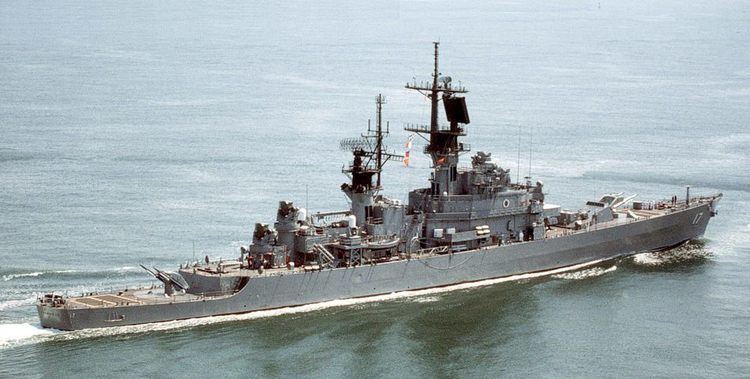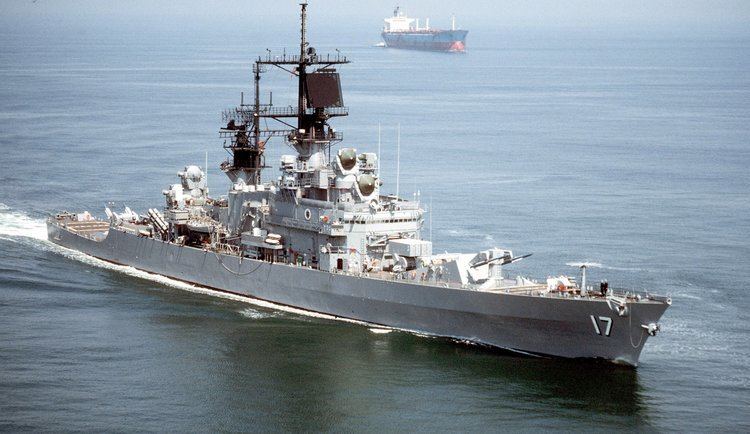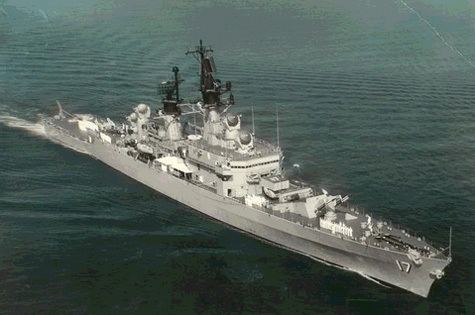Role Leahy-class cruiser Builder Bath Iron Works Name Harry Yarnell Launched December 9, 1961 | Rank Admiral Years of service 1899–1944 Length 167 m | |
 | ||
Born October 18, 1875Independence, Iowa ( 1875-10-18 ) Allegiance United States of America Commands held USS DaleUSS Saratoga (CV-3)Asiatic Fleet | ||
Construction started May 31, 1960 | ||
90 uss harry e yarnell 640x480
Admiral Harry Ervin Yarnell (18 October 1875 – 7 July 1959) was an American naval officer whose career spanned over 51 years and three wars, from the Spanish–American War through World War II.
Contents
- 90 uss harry e yarnell 640x480
- USS Harry E Yarnell UNREP USS John Rodgers Med Deployment Part 13
- Early life and Naval career
- Assignments through World War I
- Interwar assignments
- World War II
- Decorations
- Namesake
- References

Among his achievements was proving, in 1932 war games, that Pearl Harbor was vulnerable to a naval aerial attack. His findings were dismissed by his superiors until the Imperial Japanese Navy's Pearl Harbor attack went just as Yarnell had predicted.

USS Harry E Yarnell UNREP ...USS John Rodgers Med Deployment Part 13
Early life and Naval career

Born near Independence, Iowa, he entered the U.S. Naval Academy in 1893. After serving on USS Oregon (BB-3) during the Battle of Santiago de Cuba, 3 July 1898, Yarnell was commissioned ensign 1 July 1899 and reported to the Asiatic Station. He served in the Philippines during the Philippine-American War and with the Asiatic Squadron during the Boxer Rebellion. In 1902, he was the commissioning commanding officer of the destroyer USS Dale.
Assignments through World War I

From Asia, Yarnell reported to USS Connecticut (BB-18) at her commissioning. On January 13, 1907, he was the officer of the deck when Connecticut ran aground near Culebra, Puerto Rico. Both Yarnell and Connecticut captain William Swift were court-martialed; Swift was convicted but Yarnell was acquitted. Restored to duty, Yarnell sailed around the world with the Great White Fleet. Next, duty at the Newport Torpedo Station, on CINCLANT's staff, and at the Naval War College occupied him until World War I, when he served at Gibraltar and then at London, on the staff of Admiral William S. Sims.
Interwar assignments
Yarnell then rotated between sea and shore duty until ordered to the aircraft carrier USS Saratoga in September 1927, as prospective commanding officer. He served as captain of the carrier from her commissioning until 17 August 1928, when he was appointed Chief of the Bureau of Steam Engineering as Rear Admiral. While in that capacity, advising the General Board on the design of a fleet submarine, Yarnell opposed smaller types, presciently noting, "our prospective opponent [Japan] has always started operations by attacking before a declaration of war".
From January to April 1930, Admiral Yarnell was Naval Adviser to the American delegation at the London Naval Conference, and, in October 1936, he became Commander in Chief, Asiatic Fleet, with the rank of Admiral. His tour there was notable for the sagacious and firm manner with which he handled a most explosive international situation.
In February 1932, Yarnell pioneered carrier tactics in an exercise that later came to be discussed as Fleet Problem XIII. Rear Admiral Yarnell commanded the carriers Lexington and Saratoga in an effort to demonstrate that Hawaii was vulnerable to naval air power. The expectation was that Yarnell would attack with battleships, but instead he left his battleships behind and proceeded only with his carriers to the north of Hawaii where it was less likely he would be detected. With a storm as cover, at dawn on Sunday, 7 February, Yarnell’s 152 planes attacked the harbor from the northeast, just as the Japanese would ten years later. The army airfields were first put out of commission after which Battleship Row was attacked, with multiple hits on Navy ships. No defending aircraft were able to launch. The Navy’s war-game umpires declared the attack a total success, prompting Yarnell to strenuously warn of the Japanese threat.
The New York Times reported on the exercise, noting the defenders were unable to find the attacking fleet even after 24 hours had passed. U.S. intelligence knew Japanese writers had reported on the exercise. Ironically, in the U.S., the battleship admirals voted down a reassessment of naval tactics. The umpire's report did not even mention the stunning success of Yarnell's exercise. Instead they wrote, "It is doubtful if air attacks can be launched against Oahu in the face of strong defensive aviation without subjecting the attacking carriers to the danger of material damage and consequent great losses in the attack air force."
World War II
After three years' service commanding the Asiatic Fleet, Admiral Yarnell was transferred to the Retired List, and was elected an honorary member of the Rhode Island Society of the Sons of the Revolution on February 22, 1940.
On 1 November 1941, as war loomed, Yarnell was recalled to active duty and worked in the office of the Secretary of the Navy as Special Adviser to the Chinese Military Mission. He was relieved of active duty 15 January 1943, but returned in June as Head of a Special Section in the Office of Chief of Naval Operations until December 1944, when he again was relieved of active duty.
Yarnell died in 1959 at Newport, Rhode Island, his home since his retirement.
Decorations
Here is the ribbon bar of Admiral Harry E. Yarnell:
Namesake
The USS Harry E. Yarnell (DLG-17) (later reclassified as (CG-17)) was named in his honor.
